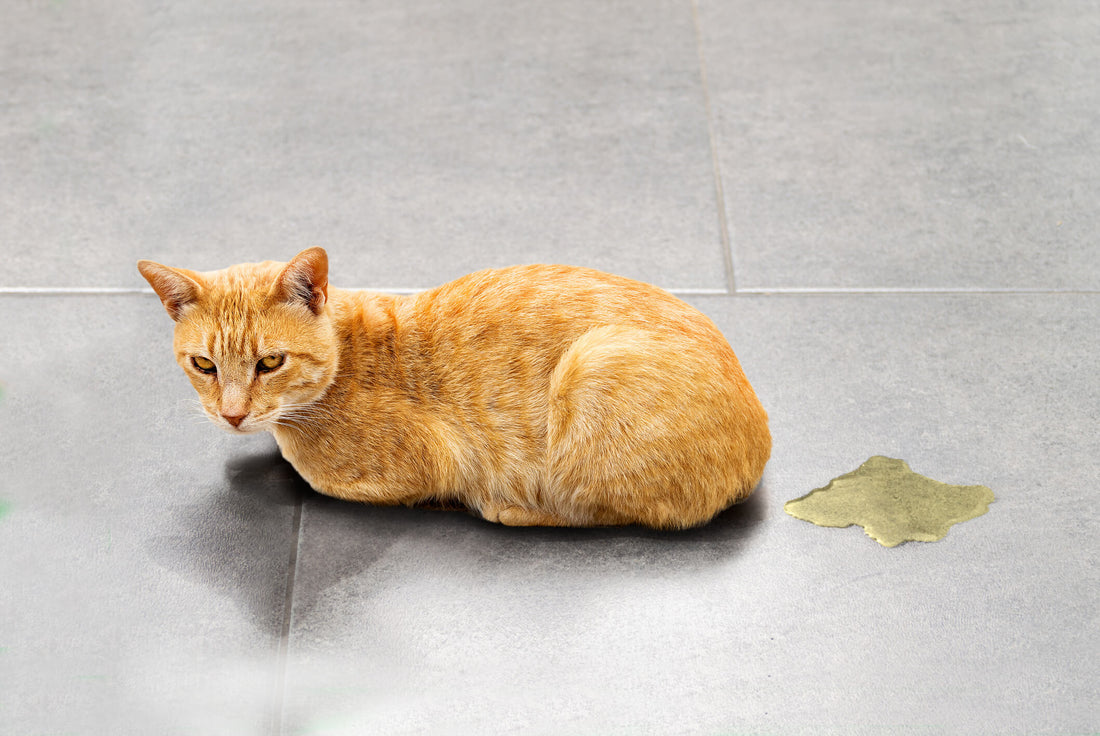
Is Your Cat Urine Marking or Is it a Urinary Problem?
Discovering that your cat has urinated outside their litter box is never a fun experience. But while your first instinct might be to call the vet to treat your cat’s urinary problem, you should consider why your cat has urinated in the first place.
In addition to urinary tract issues, cats might pee around the house in a process called urine marking—and this isn’t related to a health issue. But how can you tell the difference, and can you put a stop to it?
What is urine marking?
Urine marking is one of the many ways that cats communicate with one another. But unlike body language or vocalization, urine marking is an indirect form of communication—one meant to send messages to cats that might be passing by.
Cats can pick up on a lot of information from the smell of another cat’s urine, but the most obvious message is that another cat has been there. Urine marking is your cat’s way of saying “this is my space.” It can also communicate how long ago the cat urine marked and if the cat is in search of a mate.
It’s not only wild cats that use urine marking to communicate, though. House cats might also use urine marking, especially if there is a conflict in the home or if they feel stressed because of a recent change. If you have cats and a conflict is afoot, one or both of your cats might start to mark their territory to warn off the others or to comfort themselves with their own scent.
Urine marking vs. urinary problems
Unfortunately for pet owners, urine marking and urinary issues look very similar. They both involve urine being expelled inappropriately outside the litter box, often when you aren’t watching. So how can you determine whether your cat is distressed and marking or if they are peeing around the house because of a health problem?
There are actually a few ways to spot the difference before heading to the vet.
Urine marking
Urine marks have a few distinct characteristics that help set them apart. Most notably is where the urine has been left. When marking, most cats will back up and “spray” on a vertical surface, rather than a horizontal one. This makes walls and furniture easy targets. However, your cat will still use their litter box for normal urination.
What the urine looks and smells like also matters. Marking usually involves far less urine than might be found as a result of a urinary tract infection or other problem. Additionally, the urine will probably have a much stronger, more pungent odor. This odor is a result of additional chemicals and hormones left in the urine to communicate to other cats.
Lastly, who is urinating might clue you in to the problem at hand. Although both male and female and intact and neutered/spayed cats can all urine mark, unneutered male cats are much more likely to spray than others. If you have one in your household, you may be dealing with a urine marking issue.
.jpg)
Urinary problems
On the other hand, urinary problems also have some common signs that might help you identify if your cat has a UTI or other urinary tract issue.
If your cat is visiting the litter box or urinating around the home many times a day, more often than usual, this might be a sign of a UTI. Urinary distress is also common in urinary problems, such as straining to urinate and vocalizing while urinating.
If you’re finding no urine in the litter box but urine elsewhere in the home, this also might be a sign. Some cats with urinary tract issues may avoid the litter box due to its association with pain.
Finally, if you spot blood in the urine left around your home, you’re most likely dealing with a urinary problem that needs to be treated right away.
All cats are susceptible to urinary tract issues. However, neutered male cats are particularly prone to developing urinary blockages, which often cause little urine, pained vocalizations and lethargy.
How to stop your cat from urine marking
After spotting the clues, if you’re still unsure of whether your cat is urine marking or suffering from a urinary tract problem, it’s best to take them to the vet to be examined. This way, any urinary ailments identified can be treated promptly.
However, if you’ve cleared your pet at the vet or believe that urine marking is the issue at hand, the next step will be to prevent urine marking from happening in the future. Here are a few tips.
- Neuter intact males: If you have one or more intact male cats in your home, have them neutered. This process should help reduce mating-related urine marking, as well as prevent any accidental pregnancy with intact females or neighborhood cats.
- Reduce household stress: If you suspect that your cat is marking because they are stressed about a recent change in the household, try to identify what that stressor is and eliminate it if possible. You can also help your cat calm down through calming supplements and extra playtime or TLC.
- Solve multi-cat conflict: If you think one (or more) of your cats is marking because there is conflict with the other cats in your home, it’s time to improve their environment. Make sure each cat has their own space and necessary items, including their own litter box, food bowl and bed. Pheromone sprays may also help reduce conflict and make all your kitties feel at ease. If these things don’t work, consult a feline behavioral counselor.
What’s most important to remember is that neither urine marking nor urinary problems should be ignored in your home. Both should be treated, whether the problem is a result of a UTI or of household stress.


